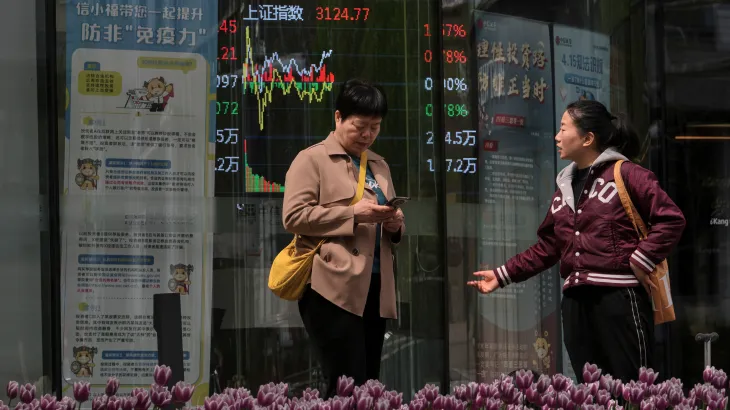
The global trade war reached new heights on Wednesday as China announced steep 84% tariffs on US goods, up from the previously declared 34%. This retaliatory move came just hours after US President Donald Trump’s aggressive 104% tariffs on Chinese imports took effect. The tit-for-tat escalation has sent shockwaves through financial markets and rattled global economic stability.
China’s Swift Retaliation
China’s Ministry of Finance confirmed the new tariffs would take effect from Thursday. In a clear signal of determination, Beijing declared it would not back down in the face of Washington’s pressure. The government emphasized its readiness to continue the economic battle if provoked further.
China labeled Trump’s tariff strategy as “blackmail” and warned that such actions could severely damage the foundations of global trade. In a statement to the World Trade Organization, China said the US moves had dangerously escalated tensions and undermined international commerce.
Market Turmoil and Economic Shockwaves
Global markets reacted instantly. Stocks plunged, commodities dipped, and bond yields fell sharply. The S&P 500 neared bear market territory, while US Treasuries, typically seen as safe assets, suffered major losses. Oil prices continued their descent to four-year lows, and the dollar weakened against other major currencies.
Major US banks and tech firms led pre-market losses, while international markets, including those in Asia and Europe, reflected the growing uncertainty.
Read: Trump Hikes China Tariffs to 104% Amid Trade War Escalation
Trump’s Push for Relocation
In response to Beijing’s counterattack, Trump urged companies to relocate to the United States. Through a post on Truth Social, he promised “zero tariffs” and “no environmental delays” for firms moving operations back to American soil. “Don’t wait—do it now!” he stated.
EU and Canada Join the Fray
The European Union and Canada also responded to the growing trade conflict. The EU has proposed retaliatory duties on US products, ranging from food items and motorcycles to consumer goods like dental floss. These countermeasures are expected to roll out in phases, further expanding the global scope of the trade dispute.
Canada, for its part, confirmed the start of tariffs on certain US auto imports.
China’s Economic Strategy
China is now working to “tariff-proof” its economy. Officials aim to boost domestic consumption and invest in self-reliant sectors such as artificial intelligence, semiconductors, and clean energy. Premier Li Qiang claimed that China is “fully confident” in the resilience of its economy.
However, economists warn that China remains vulnerable. Rising unemployment, post-Covid recovery challenges, and a struggling property market have already weakened domestic demand. Redirecting exports from the US to domestic consumers or new markets may not be enough in the short term.
The Bigger Picture
Despite its challenges, Beijing views the crisis as a “strategic opportunity.” A recent editorial in People’s Daily called on the country to use this pressure as motivation for long-planned reforms. China has already started imposing export controls on rare earth materials crucial to global tech industries, signaling a refined, broader retaliatory approach.
Ultimately, analysts suggest the success of China’s economic pivot will depend on how quickly it can stimulate internal demand and support its private sector. While the current trade war is damaging both sides, it also presents a chance for new economic alignments and leadership shifts in the global order.
Follow us on Google News, Instagram, YouTube, Facebook,Whats App, and TikTok for latest updates











